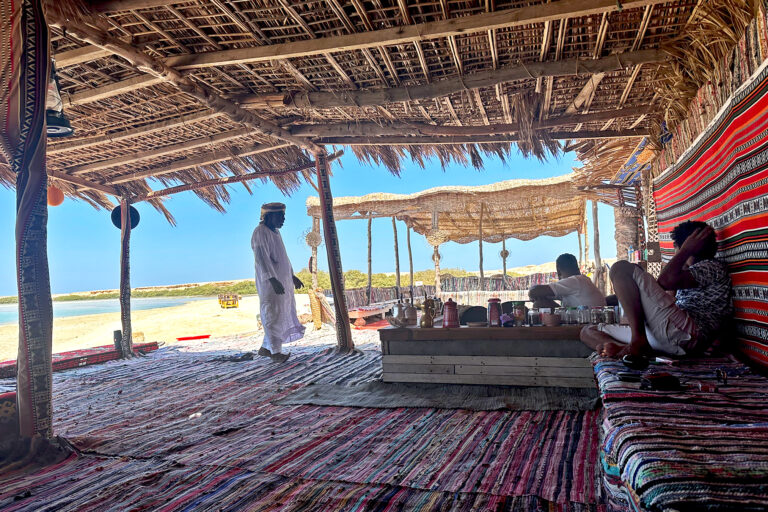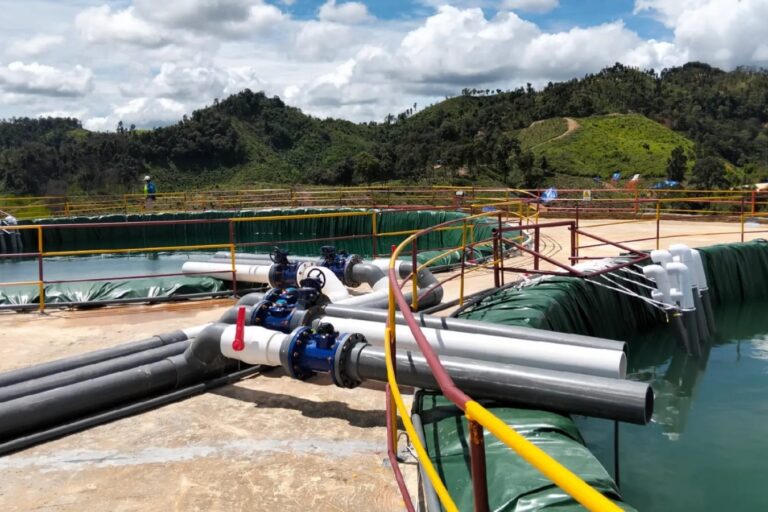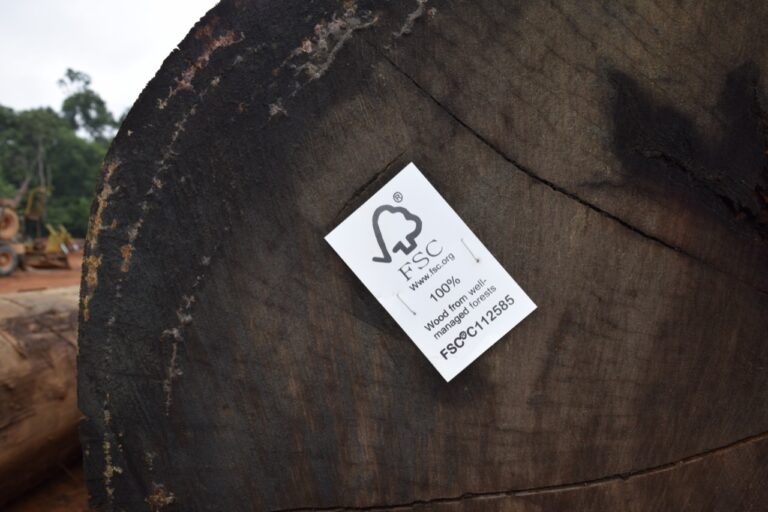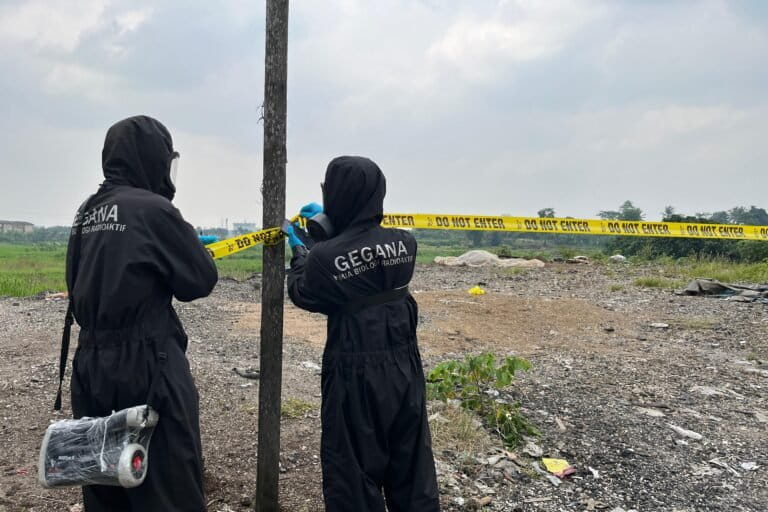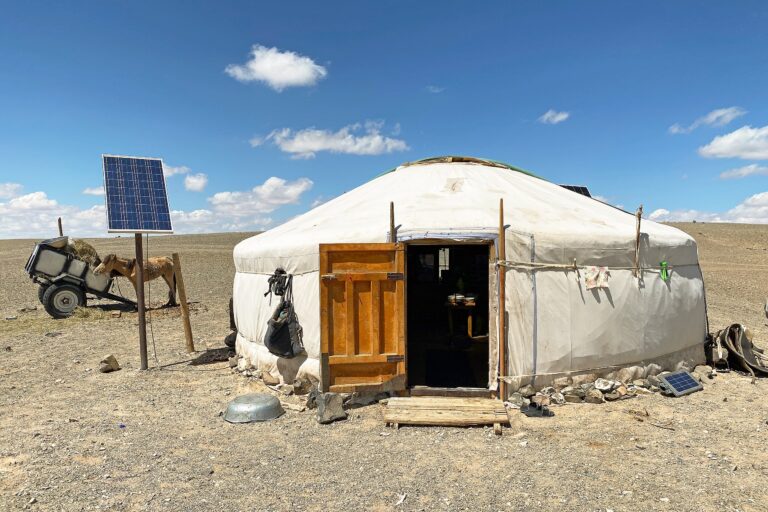- Four thousand students planted nearly 10,000 trees on public school grounds in the city of São Paulo, Brazil, in 2022, and another eight mini-forests will be planted in 2023.
- The project, created by the NGO formigas-de-embaúba, could be implemented at 650 public schools in the city, according to a MapBiomas study.
- Guarani leaders from the Jaraguá Indigenous Territory participate in the project, which was inspired by Indigenous knowledge and cosmology.
- Specialists see mini-forests at schools as a strong strategy for creating a democratic network of “cooling places” or urban oases in the face of intensifying global warming.
Native to the Atlantic Forest, the embaúba (Cecropia pachystachya) is a strong tree often used in regeneration projects that has one distinctive peculiarity: Its trunk is hollow and serves as the home for ant colonies. While ants from the Azteca genus feed on the tiny nutrient-rich balls that grow at the base of the tree’s leaves, they defend the tree by driving off other insects and herbivorous animals.
“The idea is that of cooperation, of working together,” explains Gabriela Arakaki, one of the founders of the NGO called formigas-de-embaúba, which works to create green spaces inside schools in the São Paulo urban area. The organization gets the children and communities from surrounding neighborhoods involved to plant the trees.

“We made balls of seeds and threw them into the forest so we would get really big trees,” says 6-year-old Gabriel Matias da Silva, stretching his arms as high above his head as he can. Gabriel is a young activist and elementary school student at the Paraisópolis Unified Education Center (CEU), one of the city of São Paulo’s community centers for education, culture and recreation, located in the South Zone. A mini-forest composed of more than 800 seedlings including 100 species was planted there in October.
A member of the Atlantic Forest Restauration Agreement, the formigas-de-embaúba NGO coordinated the collaborative creation of 11 mini-forests at CEUs in the city of São Paulo in 2022. Nearly 10,000 trees were planted, thanks to the participation of more than 4,000 students in the forest restoration process.
“We will plant another eight mini-forests this year. Each one will be about 400 square meters [4,300 square feet] in size,” says formigas-de-embaúba co-founder, Rafael Ribeiro. “We plant them very densely; that is to say, not just one tree here and another over there, like you usually see in the city.”
Even though the project’s main focus is not to produce food, the mini-forests are increasingly proving themselves to be good places to grow a variety of food plants: yucca, corn, beans, collard greens, sweet potatoes, tomatoes and pumpkins. They provide organic fertilizers and help the forests grow because thriving sweet potato plants don’t allow the tall grasses to grow as they can suffocate very young seedlings.

The mini-forests are also home to Atlantic Forest native fruit species. Pitangueiras, cambucis, araçás and amoreiras are planted around the edges of the forests so they can receive sunlight and be accessible to passersby.
“There was one family that saved up seeds at home and sent them to us. We also received an avocado seedling from the grandparents of one student, which we planted. Right now, we’re waiting for a cashew tree that another family is sending us,” tells Magda Miranda, an elementary school teacher at the CEU Paraisópolis who organized a work party with parents to make seed balls that were thrown into the forest. “The community is involved. The parents were really into it.”
“We never told them to bring in seeds — that idea came from the parents,” recalls Lucia Bueno, another teacher at the CEU Paraisópolis.
The project could be carried out at the 650 public schools in the city identified by a MapBiomas study as having enough space for planting a mini-forest. Denise Duarte, who leads studies on urban microclimates and the adaptation of cities and buildings to climate change, says she believes this project could be the seedbed for a broad climate adaptation plan.
“I see much potential in the idea of using schools as sites for green spaces,” says Duarte, who is a professor at the University of São Paulo’s School of Architecture and Urbanism. “We’ve seen examples in other cities like the use of schools in Paris’ climate plan, for example. They are part of a network of what they call “cooling places,” or urban oases, as my students and I call them.

Inspiration from Indigenous peoples
Like a human mini-forest, students from the eighth-grade class who helped plant the more than 800 trees at the CEU Paraisópolis stand in a large circle. They are here today to shape figures from clay and seeds called “forest guardians,” which will later be placed inside the planted area as a way to remember and respect their experience together with their teachers during the project. “I planted beans — I planted a lot of things!” says one student.
Throughout the semester, children and teens participated in six outdoor sessions during which they did observation walks, measured temperatures in green areas and paved areas, gathered soil and painted, made seed balls in a work party, planted the mini-forest and made the clay guardians. “The air is cooler under a tree,” recalls another student.
“It’s impossible not to hark back to Indigenous philosophy and culture when you think about introducing the rainforest back to this environment,” affirms Arakaki. “Planting forests involves not only environmental ideas. There’s the artistic, spiritual and political part as well. Indigenous people are the guardians of the forests and the biomes. They still preserve biomes inside their Indigenous territories and we want to be inspired by them.”

Márcio Bogarim is one of the leaders in Tekoa Yvy Porã, a village inside the Jaraguá Indigenous Territory, located in the northwestern corner of São Paulo city. He participates in the project by donating native seeds and teaching the educators how to care for them. “For us, one of the original Guarani people of the Ñandeva line, here in the city of São Paulo the rainforest is a sacred place, a place where the forest spirits live, protecting the springs, the birds, the other animals and the trees as well,” says Bogarim. “We depend on the Atlantic Forest. São Paulo is part of this preservation because we know that we need [the forest] to live, for our spirit to remain strong.”
Inspired by Guarani agriculture, permaculture, agroforestry and soil care techniques created specifically for urban forests by Japanese botanist Akira Miyawaki, the formigas-de-embaúba project foments activism inside the school communities with the aim of restoring the biodiversity of the Atlantic Forest.
“There are a series of positive results locally, and we are spreading more and more throughout the city. We worked together with MapBiomas to do a study of all of São Paulo. Right now, we’re visiting many schools so we can have a database,” explains Ribeiro.

Land, ho!
According to the map of urbanized areas in Brazil released by MapBiomas in November, urban areas in the country grew by 3.2% per year between 1985 and 2021.
“São Paulo is the largest urban agglomeration in the country both in terms of population and in terms of physical area,” says MapBiomas coordinator of urban infrastructure, Mayumi Hirye. “The Atlantic Forest was the first biome to be populated in Brazil, and today it is the biome with the most cities and the greatest area of forest lost. Our largest cites all lie inside the Atlantic Forest.”
Hirye and her team mapped out the public schools in São Paulo city that would be able to accommodate mini-forests. They crossed data from the Anísio Teixeira National Institute of Educational Studies and Research with data on the locations of São Paulo city public schools and with satellite imagery to identify the best sites.
“We identified unoccupied, unpaved spaces with less than 20% slope. This is what we extracted from these databases and our interpretation of the images,” explains Hirye about the 650 open spaces identified at different schools in São Paulo.
She sees a bright future: “As the project progresses, we will begin to see fragments of the Atlantic Forest manage to connect with one another and work its way into the city a little bit.”

Air conditioning, forest-style
“In cities, many types of heating effects overlap one another,” says Duarte. Global warming is underway all over the planet and intensifies heat waves, which at one time were sporadic but are happening with increasing frequency and intensity. Denser urban populations brought on by taller buildings and paved-over land surfaces only add to the process. They create so-called heat islands.
In fields and forests, heat is absorbed by grass, vegetation, water and at night, the heat dissipates. But in urban areas, impermeable surfaces store heat and the height and breadth of buildings with less open space make it harder for surfaces to cool off. “Heat is retained, even at night. So urban centers are warmer at nighttime,” says Duarte.
While Paris is investing in urban forests, including at schools, with the aim of becoming Europe’s greenest city, American and Canadian cities already have maps that direct people toward “cooling places” during periods of extreme heat. But these places are public buildings like schools, museums and cultural centers equipped with air conditioning.
“Resorting to a strategy based on air conditioning as the solution means spending more energy, which is a vicious cycle and horrible for climate change because it will require more power generation,” she comments. “Resultant heat removed from cooling spaces is thrown into the urban environment, increasing anthropogenic heat even more and heating the city.”
Duarte says she believes creating green forest spaces at schools holds great potential, given the current scenario.
“Imagine an intense heat wave in the city, like we are going to experience with increasing frequency. On extremely hot days, a school can receive people, it can open on the weekends and in the evenings. So the fact that schools are present throughout the entire city makes them a naturally democratic network of potential cooling places or urban oases for many more people.”
Márcio Bogarim reminds us that the rainforest belongs to everyone. “Our connection with the forest is not restricted just to Indigenous people — all human beings can have this connection. As part of our own bodies, these plants will grow into big trees. This is the sacredness that people have forgotten. They forgot this and ask what the sacred is, what form the sacred takes. Water is sacred. The sacred is that which gives life.”
In São Paulo, Indigenous Guarani unite over their reclaimed farming tradition
This story was first published in Portuguese on Mongabay Brasil’s site.
Image banner: Planting a mini-forest at the CEU Paraisópolis in São Paulo. Image courtesy of formigas-de-embaúba/Zalika Produções.







